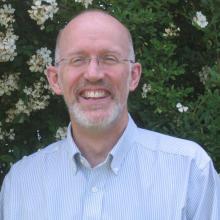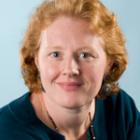The NESEA community has a history of trying to fix our buildings as a way of improving our communities. It’s time to shift our perspective, and think more about fixing our communities as a way of improving our buildings. To that end, Robert Leaver, Heather Nolen, and I have lined up an trio of expert presenters for a carbon-neutral cities workshop at BuildingEnergy Boston: Gustaf Landahl, Climate and Environment Strategist for Stockholm, Sweden; Jørgen Abildgaard, Executive Climate Project Director for Copenhagen, Denmark; and Susanne Rasmussen, Director of Environmental and Transportation Planning for Cambridge, MA.
I understand that we need to fix both buildings and communities. But I also believe we need to strike a better balance than we have so far. Sometimes I worry that a lot of us in the NESEA community are a little like the person who only has a hammer for a tool, and therefore sees everything as a nail. Most of us are architects, builders, and engineers; we work on buildings.
We don’t spend a lot of time thinking about the various transportation networks and energy grids those buildings fit into, so we fall into thinking that the buildings themselves need to be the solution to the current energy and environmental challenges we face.
A good example of this is the way in which our conversations in recent years have come to be inspired by some recent very aggressive building standards: Passive House, zero-net energy, and deep energy retrofits. These are indeed transformative standards and goals. And as a result of our conversations, we are designing and constructing much better new buildings, and making more profound improvements to existing buildings.
Although these new standards have greatly improved many of our buildings, within these aggressive standards there is no accounting for the fact that, because of our fossil-fuel transportation networks, a quarter to a third of the embodied energy of a deep energy retrofit can be the result just of getting people to the jobsite and then back home at the end of the day.
Or for the fact that when you calculate the total operating energy—including commuting energy—of a household, a leaky old home in the city can look better than a Passive House in the country. Or for the fact that the social value of a PV panel in a densely developed area is greater than that of the same panel on a zero-net energy home in an outer suburb.
I took a 2-week study tour to Sweden and Denmark in 2014 with NESEA colleagues Heather Nolen, Chris Benedict, Tom Hartman, and Andy Shapiro. We were there to look at outstanding buildings. We certainly found some nice buildings to tour, but the best buildings within the NESEA community are every bit the equal, if not better than, the best buildings we found in Scandinavia.
In much of Scandinavia, there does not need to be so much pressure on a building to be an outstanding performer because their communities make sure that their networks and grids meet the building half way.
Stockholm aims to be a fossil-fuel free community by 2050. This will require not only reengineering its energy supply system, but also becoming a more energy-efficient economy so that the demand for non-fossil fuel energy does not exceed the ability of the region to meet the demand.
Stockholm’s overall calculations have determined (at least for now) that its new building standard can be 2 - 3 times more relaxed than the Passive House standard. The savings from not having to achieve Passive House on a wide scale will help make it less costly to provide housing for the anticipated 40% increase in population between now and 2050. This is a good example of the community meeting the building half way.
In another example, Copenhagen is nearing completion of a multi-decade changeover from an oil-fired boiler in each building to a district heating connection in each building; currently 98% of the dwellings in Copenhagen are on a district heating system. The district-scale heating systems are combined heat and power plants, so they produce much of the electricity the buildings need in addition to the heat.
Although it still relies on a large percentage of coal to power these plants (an inconvenient truth that’s not as well publicized as the fact that about 40% of Denmark’s energy comes from wind), Copenhagen’s plan over time is to switch from coal to such fuels and technologies as industrial-scale heat pumps powered by wind farms and district boilers powered by biomass and garbage. As Copenhagen gradually reduces the carbon content of the energy generated by these district heat and power stations, it reduces the carbon footprint of every building in the city, so there’s less need for each building to meet aggressive (and often costly) energy standards to do its part in reaching the overall goal of community carbon-neutrality.
These extraordinary things that Stockholm and Copenhagen are achieving might seem interesting but ultimately pie-in-the-sky impractical for municipal planners and administrators here in the Northeast who can only dream of converting whole cities to low-carbon district heating and electricity systems. But it’s not just Scandinavian cities that will be represented on our panel: Cambridge, MA, has its own aggressive plan to achieve zero net emissions in its building stock. Although the panelist from Cambridge, Susanne Rasmussen, was born and educated in Denmark, she still represents a ray of hope that we Americans also can and will get big things done here in the Northeast.
A key goal for this workshop is that each participant walk away at the end of the day feeling not only inspired, but also confident that he or she learned something immediately useful, practical, and empowering; and, most importantly, knows what the next step would be once back at home. A big promise, but one I am confident Gustaf, Jørgen, and Susanne will keep, regardless of the workshop participant— professional planner, elected official, community organizer, or concerned and motivated citizen.
Our Mission
NESEA advances sustainability practices in the built environment by cultivating a cross-disciplinary community where practitioners are encouraged to share, collaborate and learn.





Add comment